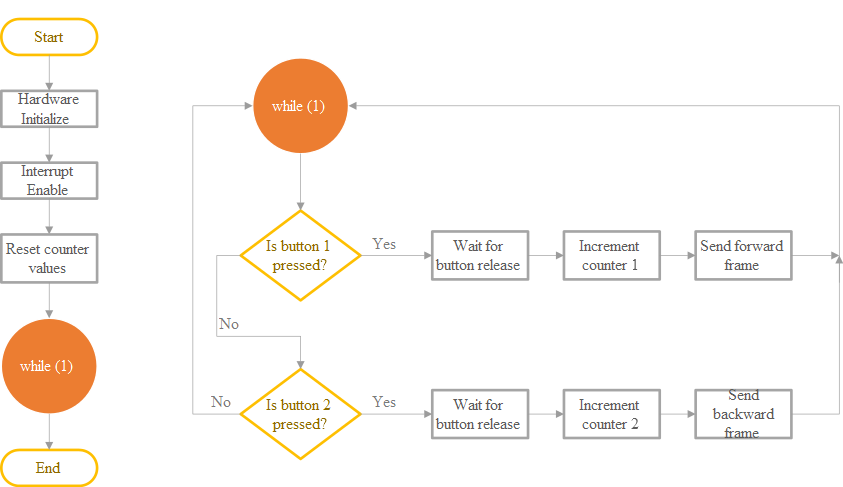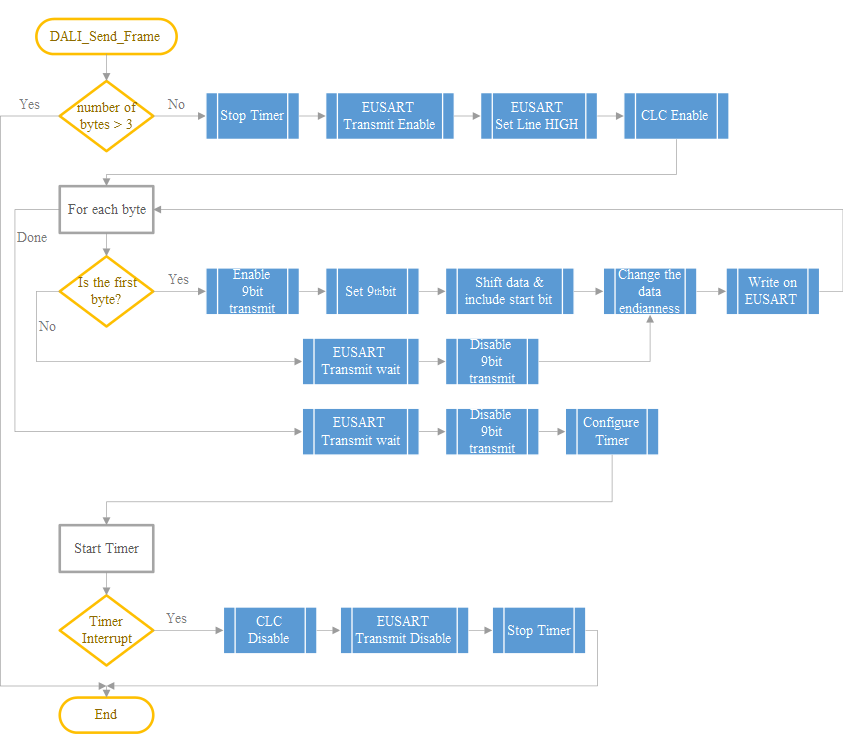The functionality of the code is briefly described in Figure 1. After the hardware configurations mentioned in the previous chapter through the MCC selection steps, the demo application counts every push of the button, stores the value in a byte and will further send DALI-2 frames. In case of the frames with more than one byte of data, the first one will contain the counted value and the others will be filled with zeros.
Figure 1. Demo Workflow


- 1.For a DALI frame implementation, the user
must add the
manchester_encoder.candmanchester_encoder.hfiles to the project. These files implement the DALI-2 frame transmissions providing ‘DALI_Send_Frame(block_of_bytes, number_of_bytes)’ function, which takes as a first argument a block of bytes representing the data of the frame, and as a second argument, the number of bytes. In conclusion, both forward and backward frames can be sent by calling the same function but with a different number for the second argument (1 for backward and 2 for forward).Note: The function will activate the 9-bit transmission option of the EUSART for the first byte of the frame, will deactivate it once it is done, and will change the endianness of every byte to MSB-LSB to comply with DALI-2 requirements. More details can be found in the following figure.Figure 2. API’s Workflow
- 2.In ‘
main()’, after the initializing procedures, the user must enable the global and peripheral interrupts required by TMR8. - 3.In ‘
while (1)’, the state of the buttons is checked and, if a button is clicked, the respective counter is incremented and a DALI-2 frame is sent.